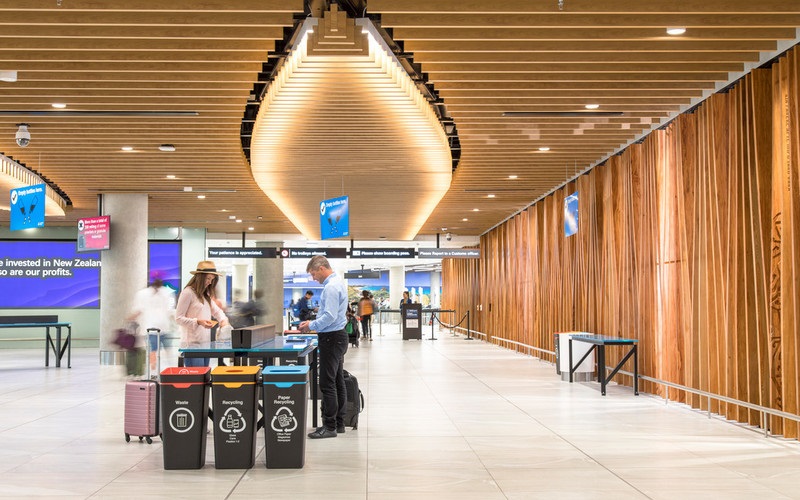Managing waste
We consider that waste should be treated as a resource. Waste to landfill is an unsustainable use of resources and land, and contributes to our carbon footprint. Waste management at Auckland Airport is also particularly important in terms of protecting New Zealand’s biodiversity.
Auckland Airport has conducted waste audits in the terminal and corporate office buildings to help improve our understanding of waste streams and opportunities for waste reduction.
In 2021 we set a target of a 20% reduction in waste to landfill from 2019 levels by 2030.

Auckland Airport’s significant reductions in waste to landfill in FY21 and FY22 were largely due to the much lower passenger numbers as a result of COVID-19 restrictions in these years.
Collaborating with our partners
Auckland Airport works with terminal retail tenants to improve their sustainability efforts. The terminal tenants have committed to reducing reliance on single-use items, improving recycling rates and removing waste by leveraging our supply chain relationships.
We are also investigating full back-of-house sculleries so food and beverage outlets can reuse crockery and cutlery instead of supplying single-use packaging and utensils.
Auckland Airport has established a transitional waste facility in partnership with airlines, the Ministry for Primary Industries and ground handling agents to manage quarantine waste.
Quarantine waste is the waste generated ‘airside’ (beyond immigration and customs, including on aircraft). It poses biosecurity risks and is steam-sterilised by Interwaste, a specialist provider.
The transitional waste facility allows uncontaminated airside waste to be separated from quarantine waste and diverted from landfill.
